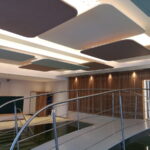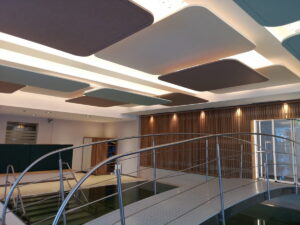
Planning a commercial design project can be a complex and multifaceted endeavour. Working with a reputable design firm like Redcom can streamline the process, ensuring that every aspect of the project is executed efficiently and professionally. Considerations to keep in mind when embarking on a Redcom Commercial Design and Construction.
1. Define Clear Objectives and Goals
Before beginning any design project, it is crucial to establish clear objectives and goals. What are the primary purposes of the space? How will it be used? Who will be the main users? Defining these elements helps Redcom tailor the design to meet specific needs, ensuring functionality and satisfaction. Consider factors like the type of Redcom Commercial Design and Construction business, the number of employees, and the desired atmosphere.

2. Establish a Realistic Budget
Budgeting is a fundamental aspect of any commercial design project. It’s important to have a realistic understanding of the costs involved and to communicate this clearly with Redcom. This includes not only the design and construction costs but also potential expenses for permits, materials, and unforeseen contingencies. A well-defined budget helps avoid financial surprises and keeps the project on track.
3. Consider the Timeline
Commercial design projects often come with tight deadlines. Establishing a clear timeline with Redcom from the outset is essential to ensure that all phases of the project are completed on schedule. This includes setting milestones for design approval, procurement of materials, construction, and final inspections. Regular updates and open communication with Redcom will help manage time effectively and address any delays promptly.
4. Emphasize Functionality and Flexibility
The functionality of the commercial space is paramount. Redcom’s expertise in creating efficient layouts can optimize space usage and improve workflow. Additionally, considering future growth and changes in business operations is important. Designing flexible spaces that can adapt to evolving needs will save time and resources in the long run. This includes modular furniture, movable walls, and versatile workstations.
5. Focus on Aesthetics and Branding
The design of a commercial space should reflect the brand’s identity and values. Redcom can help create an environment that not only looks appealing but also aligns with the company’s image. Consider color schemes, materials, and design elements that reinforce branding. A cohesive aesthetic can enhance customer experience and employee satisfaction, contributing to the overall success of the business.
6. Prioritize Sustainability and Efficiency
Sustainability is an increasingly important consideration in commercial design. Redcom can incorporate energy-efficient systems, sustainable materials, and environmentally friendly practices into the project. This not only reduces the environmental impact but can also lead to long-term cost savings through reduced energy consumption and maintenance expenses. Certifications like LEED can also add value to the property.









